Introduction
On December 18th 1960, Seiko presented to the Japanese public a new reference. It was a watch that marked the beginning of a story that - except for a self-inflicted pause for a little over a decade from the late 1970’s through into the 1980’s - has continued through until today.
The significance of the Grand Seiko of 1960 is proudly written on the dial immediately under the watch’s name, and extensively detailed in the certificate that came with the watch - it was the first Japanese watch to be compliant with the Swiss Bureaux Officiels de Contrôle de la Marche des Montres "Superior Chronometer" standard.
That standard would, for the Swiss, eventually evolve into what we now know as the COSC, or “Contrôle Officiel Suisse des Chronomètres” standard. For Seiko, due to the Swiss objecting to the audaciousness of a Japanese company using the term “Chronometer” to describe their self-tested watches, it would by the mid 1960’s turn into what we now refer to as the “Grand Seiko Standard”.
There was another, stricter, chronometry standard that had been around since the mid 19th Century, reserved for what were referred to as “Observatory Chronometers”, tested at - and the clue is of course in the name - astronomical observatories. The most famous of these observatories was at Neuchatel, pictured in the photo above.
With the announcement in 1959 of the award of the hosting of the 1964 Olympics to Tokyo, Seiko set out to ensure that they would be the official timekeepers for the event1. Whilst the evaluation and testing of the majority of the stopwatches to be used at the Olympics was completely independent from the Swiss observatory competitions, there was a timekeeping device developed for the games that became Seiko’s first entry to the Neuchatel Observatory chronometry competition in 1963 - the Crystal Chronometer2.
And so began an overlapping chapter in the long and illustrious histories of both Seiko and the Swiss Observatory Chronometer competitions, albeit a chapter that - despite its historical significance - would be rather short lived.
Seiko’s first entries to the Neuchatel competition in 1963 were entered into the categories for quartz regulated timepieces, but from 1964 through to 1967, both Suwa-Seikosha and Daini-Seikosha submitted movements to the mechanical wrist watch category3.
The knowledge gained by the participation of both companies in the competitions over this period would ultimately lead to the creation of the legendary Grand Seiko VFA’s4 - watches that were guaranteed to be accurate to 1 minute per month for the first two years of ownership.
But the Grand Seiko VFA’s - the first four of which can be seen proudly presented here on the pages of Seiko’s Special Luxury Watch Catalogue of 19695 - were not Seiko’s ultimate statement on mechanical chronometric performance.
That mantle - a mantle that has not been equaled by the company even to this day - fell on the shoulders of another reference.
The Seiko Astronomical Observatory Chronometer
I have used the word “legendary” to describe the Grand Seiko VFA’s on countless occasions, which leaves me in a bit of a bind. What adjective is there out there that I can use to describe the Astronomical Observatory Chronometer?
Some time ago, Anthony Kable at Plus9Time - whose writings I have already linked to three times just in the introduction - wrote what is probably the most essential account on the reference6 , an article that I would encourage everyone to go off and read before continuing with this one - there’s little point in my simply rewriting what is already there.
Suffice to say, the Seiko Astronomical Observatory Chronometer (henceforth on occasion abbreviated to ‘AOC’) was the only watch ever made by Seiko that was sold to the public having been subjected to the exacting Observatory Chronometer testing regime that the competition movements submitted to Neuchatel chronometry trials underwent. It was launched in the very same “Seiko Special Luxury Catalogue” in which the first four Grand Seiko VFA’s debuted.
As those who have returned to this article having read Anthony’s will now know, from 1968 through to 1970, a total of 283 movements were submitted for testing, in three batches, from which 226 passed the exacting testing criteria to be awarded certification as Observatory Chronometers.
As an aside, to the best of my knowledge, the AOC is the only series production watch manufactured by Seiko (limited editions of course excepted) where it is publicly known exactly how many originally existed.
The initial batch of 103 movements that were submitted in 1968 - of which 73 passed - utilised the Grand Seiko 4520A movement, whilst the remaining movements submitted in 1969 and 1970 utilised the Grand Seiko 4580 VFA movement.
What the fate was of the movements that did not make the grade is unknown. Perhaps those 30 caliber 4520A movements that “failed” made their way into just regular 45GS’s. And if they did, what a treasure hunt that would be to find one, because it’s actually possible - even without knowledge of the movement numbers concerned - to identify the 4520A movements that were submitted to Neuchatel. Logically one might assume that the rejected 4580 movements ultimately found homes in the Grand Seiko 4580-7000 and 4580-7010 VFA’s, or even the Seiko 4580-7020 “Imperial VFA”s. But we just don’t know - Seiko have never commented on the matter.
It is important to recognise that, similarly to the earlier famous Rolex “Kew A Certificate” watches, Seiko’s Astronomical Observatory Chronometers - whilst subjected to the full Observatory Chronometer testing process - were not actually entered into competition. The final Neuchatel competition for which results were announced was in 1967, so this would have been impossible for the AOC’s anyway.
There is however one serially produced movement - and to the best of my knowledge, it is the only one - that was entered into competition and subsequently cased up and sold to the public, and that is Girard-Perregaux’s 32A, of which no fewer than 662 examples were submitted to Neuchatel for the 1967 competition. Just because a movement has been submitted to competition however does not of course imply it passed, and the contemporary marketing of these watches - not to mention the “forum folklore” surrounding them - is, how can I put it kindly, somewhat questionable. But that’s a story for another day.
Let’s take a look at what it actually takes to make the grade as an Observatory Chronometer, and why Seiko’s achievement with the AOC is so remarkable.
To do so is going to require a (very) deep dive on just what is involved in the COSC and Observatory Chronometer tests - not only the procedures involved, but also the measures that they use to assess the chronometric performance, and how those measures are calculated. Whilst there are a few places where you can find quite detailed descriptions of what is involved in the COSC test, there is almost nothing out there that details the Observatory Chronometer test to the level required for the purposes of this article - and certainly absolutely nowhere that I can find that has ever done a mathematical comparison of the two to understand exactly how the measures reported in both tests differ.
Because if we are going to be able to answer the question “Just how significant is the Seiko Astronomical Observatory Chronometer?”, we need two things.
Firstly, we need an understanding as to how to convert Observatory Chronometer test measures into COSC test measures - because without this ability, how else can the two be objectively compared, and hence, how can we address the question we have set out to answer?
And secondly - as it transpired when I first attempted to do this a few years ago - in order to accomplish that first objective, we are going to need the full Observatory Chronometer test results for a Seiko Astronomical Observatory Chronometer.
And there is not a single instance of those full test results ever being published for any of the 226 Astronomical Observatory Chronometer movements that passed the Observatory Chronometer test.
Until today.
Warning - you will definitely need your thinking caps on in order to get through the following five and a half thousand words. If you’re short on time and/or patience, just do a search for the words “How about a high level summary of all that please, Gerald” and skip there.
Differentiating Observatory Chronometers from “regular” Chronometers - part 1
Before we get into the maths (don’t worry - I’ll be as gentle as I can when we do), it’s worth taking a look at the actual testing regime for a COSC “Superlative Chronometer”, against one for an Observatory Chronometer to get a sense as to just how much more stringent the latter is.
The COSC testing process
Probably the most commonly known and referenced chronometry testing standard these days is the “Contrôle Officiel Suisse des Chronomètres”, or “COSC” for short. As per the official COSC website7, over 2 million movements are tested to COSC standards annually, representing around 15% of Swiss watch exports.
The COSC test takes place over a period of 15 days, during which the watch’s performance over the course of 24 hours is examined in a number of different positions and temperatures. At the end of each 24 hour day, the movement’s “daily rate” is recorded - that is, the deviation over the course of those 24 hours to exact time as measured by an atomic clock.
The first 10 days of testing are split into five “periods”, each lasting two days. For each period, the watch is placed in a different position (with respect to gravity), but at a constant temperature of 23 degrees Celcius.
Period 1 - two days in the “6 up” position (effectively, hanging vertically upside down)
Period 2 - two days in the “3 up” position
Period 3 - two days in the “9 up” position
Period 4 - two days in the “dial down” position (the watch placed flat on a horizontal surface, with the dial facing the floor)
Period 5 - two days in the “dial up” position
(Intriguingly, at no point is the watch tested in the “12 up” position, which is effectively the position the watch would be in were you to have it on your wrist, lift up your arm, and twist your forearm so that the watch is facing you and you can read the time. This “12 up” position is actually the additional sixth position that watches are tested in under the “Grand Seiko Standard”.)
The next three days, the watch is tested at three different temperatures, all in the dial up position as if the watch was laying flat on a table.
Day 11 tests at 8 degrees Celsius
Day 12 at 23 degrees Celsius
Day 13 at 38 degrees Celsius
Again, at the end of each 24 hour period, the daily rate is recorded.
For the last two days of the test, the watch is returned to the same position it commenced the test in - “6 up” - and the final two daily rates recorded.
The Observatory Chronometer testing process
The test for an Observatory Chronometer follows a similar pattern to that for COSC testing - the watch is placed in a number of different positions and at a number of different temperatures, and a record taken of its daily rate every 24 hours.
The positions are the same as those used for COSC testing, and the watch goes through them in the same order, but the temperatures are different.
The primary difference between the COSC test and the Observatory Chronometer test is that the periods of the latter (the number of days the watch is tested over in a particular position and at a particular temperature) are four days. Here’s the process -
Period 1 - four days in the “6-up” (actually referred to in the bulletins as “12 below” position)
Period 2 - four days in the “3-up” position (actually referred to in the bulletins as “9 below” position)
Period 3 - four days in the “9-up” position (actually referred to in the bulletins as “3 below” position)
Period 4 - four days in the “dial down” position
Period 5 - four days in the “dial-up” position
For those first 5 periods, the movements are tested at 20 degrees Celsius.
The next three periods are where the movements are tested at the different temperatures, but a key difference here is that whereas for COSC just a single daily rate is recorded at each temperature, in the Observatory Chronometer test, the watch actually spends a total of 5 days at each temperature, with the daily rate recorded every 24 hours.
Period 6 - five days in the “dial up” position at 4 degrees Celsius.
Period 7 - five days in the “dial up” position at 20 degrees Celsius.
Period 8 - five days in the “dial up” position at 36 degrees Celsius.
One important nuance in the testing procedure at the different temperatures is that whilst the watch is at each temperature for five days, the first day’s daily rate at each temperature is discarded and not used in the later calculations (or at least, it should be discarded - more on this later!). Presumably this is done to ensure the watch has fully ‘settled’ to the desired temperature. The other thing to note about this section of the testing is that it is not just assumed the temperature is correct - it is recorded every day to the nearest 0.1 degree Celsius, and any deviation is taken into account in the subsequent calculation of measures.
Two more periods each of 5 days to go.
Period 9 - five days in the “dial up” position at 20 degrees Celsius
And finally -
Period 10 - five days in the “6-up” position at 20 degrees Celsius
As with the periods 6 through 8, where the watch is tested at different temperatures, these final two periods are also each 5 days in duration, but the first day’s daily rate is not used in calculating the Observatory Chronometer measures.
Differentiating Observatory Chronometers from “Superior” Chronometers - part 2
Ok so that’s the different testing regimes out of the way. The next question is, what do we do with all those daily rates that we’ve just collected?
Well, let’s find out - and this is where some maths comes into it. No need to worry though - the maths is simple, as long as you have clarity on what the different measures we are going to be talking about actually - if you will excuse the telegraphed pun - mean.
The COSC measures
The COSC certificate is split into three main sections. The top most section identifies the movement being tested, and provides some headline information about it. In this case, the certificate is for a Zenith El Primero Chronograph in my collection.
The main part of the certificate is the table in the middle, which is where the daily rates that we discussed above are recorded.
As can be clearly seen, the first column identifies the day of testing, the second the temperature for the day, the third details the position, the fourth has the daily rates (remember - this daily rate is simply the different between the actual 24 hours, and the time elapsed on the watch during that time frame).
In the final column we encounter our first bit of maths. You can see that there are five measures provided, V1 through V9 (just the odd numbers), and each of them is simply the difference - or variance - between the daily rates within the period represented. The results of this calculation can appear to be a little odd, because unfortunately the daily rates are not shown on the certificate to their full degree of accuracy - they are rounded to the nearest 1/10th of a second. The variances between the daily rates - as reported in the final column - are calculated from the full accuracy recorded, and so it is possible to see apparent rounding errors here. Note also that it is the “absolute” variance between the two daily rates that is reported - i.e., the sign of the result is discarded.
It’s the figures at the bottom of the certificate which are the ones that we are most interested in, since it’s these results that are judged against an acceptable range to determine whether or not a movement passes the COSC test.
Let’s go through them one by one to get an understanding of how they are calculated, and what their purpose is, and what the acceptable range of values is for each of them in order for a watch to obtain COSC Superior Chronometer certification.
Mean daily rate in the different positions (M)
“Mean” is - as far as we are concerned for the purposes here - simply another way to say “average” (the bar over the M is a scientific way to indicate that we are taking the mean of whatever variable M represents - in this instance the “Marches journalieres”, but I will not attempt to replicate it here). “M” is simply calculated by adding up the daily rates for the first 10 days of the test, and dividing by 10.
Note that this means a watch could come through testing apparently having a very good result for this measure, even if on the first day it ran 10 seconds fast, the second 10 seconds slow, the third 5 seconds slow, the fourth 5 seconds fast, etc. Fast, slow, fast, slow - the rates all just cancel out as an average.
To qualify as a COSC certified Superior Chronometer, M has to be between -4 and +6 seconds. This is the figure that people most often quote when discussing the “accuracy” of their watch. One common mistake that many collectors make when considering and discussing the performance of their watches is that the meaning of M is that whichever position the watch is in, the daily rate will be between -4 and +6 seconds for a COSC certified Superior Chronometer.
My Zenith El Primero is a great example of why that is a fallacy - if you take a look at the performance in period 5 - where the watch is horizontal with the dial up - its rate falls outside that -4 to +6 range. But it still passed (just!), because it’s the average of all the daily rates that matters.
Although it’s the most often discussed, we will discover later that when it comes to the most stringent chronometry test there is - the Observatory Chronometer test - it isn’t even reported.
Mean variation (V)
Earlier, in discussing the overall layout of the certificate, I explained that the final column in the table - the variances of the daily rates - the figures were simply the differences between the daily rates within the period.
It is just one little step more complicated than that though - those figures are what is referred to as the “absolute differences”. What this means is that after calculating the difference between the two daily rates, we discard the sign of the result. In the results shown in the above certificate, we can see that both V7 and V9 are reported without signs, despite the fact that a simple subtraction calculation would have one of them being a negative number.
The mean variation, “V”, is simply the average of the five reported variations to the daily rate in the final column of the table. To be precise, it is the average of the absolute variations of the daily rates within each of the first five periods of testing.
This is an important distinction to the way that M is calculated, in that an alternating succession of fast and slow daily rates between periods does not “improve” the value of V.
In order to pass the COSC Superior Chronometer test, the value for V must be less than 2.
Maximum variation (Vmax)
This measure is one that we can read straight from the table as the maths has already been done. It is simply the maximum value from V1 through V9. To pass the Superior Chronometer test, this value must be less than 5.
Difference between flat and hanging positions (D)
This measure - on the face of it at least - is a pretty good stress test to see how a watch performs in two extremes with respect to the force of gravity.
It is calculated by working out the difference between the daily rates from period 1 (where the watch is hanging vertically with 6 up), and those from period 5 (where the watch is in a horizontal position with the dial up). However, because each of those periods consists of 2 days, we have two daily rates for each of them. Therefore, the average of each period is used.
The calculation is the following - (Daily Rate for day 1 + Daily Rate for day 2)/2 - (Daily Rate for day 9 +Daily Rate for day 10)/2.
Once again, as with the calculation of M, we can see that a watch that might perform inconsistently in each position (fast on day one, slow on day two), would arguably have a result for this measure which perhaps didn’t tell the full story as to the consistency of its precision.
D must fall between the values -6 to +8 in order to pass as a Superior Chronometer under COSC testing.
Greatest difference between the mean daily rate and any rate from the 5 first positions (P)
Wordy it may be, but conceptually this one is pretty simple - although a sneaky trick is required to calculate it efficiently. What “P” is looking to provide is some insight into just how bad the worst case scenario is for the daily rate, over the first five periods, when compared to the average. It could be argued that proper statistical analysis (such as a measurement of the standard deviation of the daily rates) would be more beneficial, but we’re stuck with what we are given here.
We are looking to establish what the maximum difference is between the mean daily rate across the different positions (M), and the individual daily rates for each day within the first five periods. One might think that this would require us to calculate M-M1, M-M2, etc, and then find the maximum from all ten results, but if we apply a bit of logic, we can get there faster.
The greatest difference between the mean daily rate and any rate from the first 5 positions will either be the difference between the mean daily rate and the maximum of the individual daily rates, or it will be the difference between the mean daily rate and the minimum of the individual daily rates.
So we can just subtract the maximum value for M1 through M10 from the average, compare it to the result when we subtract the minimum value for M1 through M10 from the average, and take the highest result. This will give us P.
For a movement to pass as a Superior Chronometer under COSC testing, the value of P must be less than 10.
Variation of rate per 1 degree “centigrade” (C)
Depending on where you live, and how you wear and store your watch, this could actually be one of the most important of all the measures that are reported, and is basically self explanatory.
Day 11 of the COSC test involves establishing the daily rate for the movement at a temperature of 8 degrees Celsius (apologies, but as someone who studied physics at university, I refuse to use the term “Centigrade” for this purpose!), and day 13 measures the daily rate at 38 degrees.
To calculate “C”, we simply subtract the daily rate reported for day 11, from that reported for day 13, and divide by the temperature difference (30).
COSC standards for Superior Chronometers requires the value of C to be within the range +/- 0.6.
Rate-resumption (R)
You will have probably noticed that for the final period of testing, the movement is returned to the same position it started in - “6 up”. The reason for this is to enable a test as to how the watch has “survived” the arduous testing process. OK, so I’m exaggerating somewhat, but you get the drift.
Although the final period of the COSC test is two days, the daily rate from day 14 is ignored - perhaps COSC are giving the watch a chance to settle back to the standard temperature - and so this “Rate-resumption” is simply the difference between the daily rate on day 15, to the average of the daily rates on days 1 and 2.
To qualify as a COSC certified Superior Chronometer, R must be within the bounds of +/- 5.
The Observatory Chronometer measures
Above is the front page of a “duplicata” bulletin issued for my Seiko competition movement number 052561 that took seventh position in the final Neuchatel Observatory Chronometer competition in 1967.
If you compare it to the COSC certificate above, a few things are immediately obvious. First of all, unlike the COSC certificate, we don’t have visibility of the actual daily rates - and the reason for this is pretty obvious, there isn’t enough space to fit them all in! Secondly, everything is in French, with no other languages provided (so hopefully I can get this thing translated!); and finally, it appears that an almost entirely different set of measures are reported.
Whereas for COSC we had M, V, Vmax, D, P, C & R, here we are presented with E, C, S, R, two with just descriptions, and a P.
Now - three of the measures would appear to be common between the two testing regimes - both have P, C, and R. However as we will discover, just because COSC and the Observatory use the same letter for a measure, it doesn’t necessarily imply they are reporting the same thing, or even calculating the same thing in the same way.
Objectively comparing COSC and Observatory tests is hard, which is perhaps why nobody - to the best of my knowledge - has ever done it before.
Here goes…
Ecart moyen de la march diurne (E)
In English - “Average deviation from the daytime market”. Well thanks Google Translate, and DeepL, who both give that same translation. I don’t think that’s going to get us very far.
Maybe we should give ChatGTP a go?
Ok not the best of starts, but with a bit of a nudge, we have a clear winner. “Average daily timekeeping deviation” actually sounds like it might be very similar to the second measure in COSC - V, the mean variation in the daily rates.
In actual fact though, a thorough investigation of the maths behind the calculation of E for Observatory Chronometers shows that there is a significant difference between the two. In the COSC test, for V, we simply take the difference between the daily rates for the two days within each of the first 5 periods, make it an absolute number (remove any minus signs), and then calculate the average of those five numbers.
In order to calculate E for the Observatory test, we go through the following steps -
For each period of testing, calculate the average of the daily rates for the four days within the period.
For each day within each period, calculate the absolute value of the difference between the average of the daily rates for the period (1.), and the daily rate for that day.
This gives us four variances (2.) to the mean - one for each day within the period. Now calculate the average of those four values, for every period.
Finally, calculate the average of (3.) across all ten periods.
So - whereas V in COSC testing is calculated from the average of the differences in the daily rates within each period, E in Observatory testing is calculated from the averages of the variance of the daily rates to their mean in each period. It’s a significant difference, and it can take several readings of the two explanations before it finally sinks in. But it’s easily explained with an example.
Let’s simplify the Observatory test to just two days per period, so that it is the same as COSC testing, and simplify both to just a single period.
Assume that the watch under testing runs 4 seconds fast on day 1, and 1 second fast on day 2.
V in COSC testing would simply be the difference between the two rates, (4-1) = 3.
To calculate E in Observatory testing, we first establish the mean of the two daily rates, (4+1)/2 = 2.5, then calculate the absolute variance to that mean for each day. For day 1, that variance is (4-2.5) = 1.5, and for day 2, it is (1-2.5) = 1.5 (remember we strip away the minus sign). Finally, we calculate the average of those variances of each day’s daily rate to the mean of the daily rate, (1.5 + 1.5)/2 = 1.5.
Whilst the two measures V and E might initially have sounded like they were equivalent, we can see very clearly that they are not. The good thing is that now we have this understanding, we could - should we so wish - calculate V for watch undergoing an Observatory Chronometer test, and E for one undergoing a COSC test.
Those who are following very astutely would have noticed that there is one other significant difference between these two measures, that - should we wish to do a true comparison of an Observatory Chronometer to one that has been tested under the COSC regime - we need to take great care over.
E in the Observatory test is calculated over all periods - not just the first 5, as V is in the COSC test.
In order to qualify as an Observatory Chronometer, the value for E cannot be greater than 0.75.
Coefficient thermique (C)
In English - “thermal coefficient”.
For this measure, there is a direct equivalence to “C” in the COSC test, the only differences being that for COSC there is just a single daily rate at each of the two outlying temperatures, whereas for the Observatory Chronometer test, the watch spends a total of 5 days at each temperature, and it is the average of the latter 4 of those 5 days that is used (the first day’s daily rate is not included in the calculation of the mean for the period).
The temperatures - as mentioned earlier - also differ between the two tests, but importantly in each case, the outlier temperatures in each of the tests are an equal number of degrees away from the standard temperature.
In order to qualify as an Observatory Chronometer, the value for C cannot be greater than 0.2.
Erreur secondaire de la compensation (S)
In English - “Secondary Compensation Error”
One of the interesting aspects of the COSC test is that on day 12, the watch is tested in the dial up position at 20 degrees Celsius (this is the day between the tests at 8 and 38 degrees), yet the daily rate that is recorded is not used in the calculation of any of the measures. Possibly, COSC use this day as a sort of buffer between the two outlying temperatures, but for anyone who has a watch with a COSC certificate, take a look at the daily rate for day 12, and compare it to those for days 9 and 10, where the watch is also in dial up position at 23 degrees.
For the Observatory test, I have mentioned that the first day of each of the periods where the temperature is changing is ignored in the calculations - or at least it should be. The calculation of “S” on the Observatory test includes this seventh Period of testing where the watch is at 20 degrees, between the sixth Period at 4 degrees, and the eighth at 36 degrees.
If you cast your eye back to the overview of the procedures in the Observatory Chronometer test, you will notice that in actual fact there are a total of three different periods where the watch is in dial up position at 20 degrees Celsius - they are Periods 5, 7, and 9.
In order to calculate this secondary compensation error, we take the average of the mean variances of periods 6 and 8 (excluding day 1 of the periods, where the watch is at 4 degrees and 36 degrees), and subtract from that average, the average of the mean variances of periods 5, 7, and 9.
It is a measure that is not part of COSC certification, but now we understand how it is arrived at, we can calculate its equivalent for any COSC certified watch where we have the daily rate results available.
It took me ages to wrap my head around the concept behind this measure, because I found the way the calculation is presented on the inside page of the bulletin rather confusing.
It was only when I reformulated it into how I describe it above that it dawned on me what it was measuring. The idea is that the closer it is to 0, the better, and ideally if you average out the daily rates at the extreme temperatures, they should be equal to the daily rate at the average of those temperatures. In Observatory testing that standard temperature is 20 degrees (the average of the extremes of 4 and 36), and in COSC testing it is at 23 degrees (the average of the extremes of 8 and 38).
You might have noticed that I have mentioned on more than one occasion that in calculating the mean of the daily rates for the periods 6 through 10 (each of which has a duration of 5 days), the calculation of the Observatory Chronometer test measures should discard the first day’s rate from each period.
When I received the Duplicata certificate for my competition movement, one of the first things I did was to copy all the hand-written data on the certificate into a spreadsheet, and reconstructed the calculations behind the measures. Surprisingly, I got a different result for three of them, to what was shown on the certificate. The three measures where my results differed to those on the certificate were all ones that involved period 7 - the period in the middle of the temperature tests, so I had a look at the certificate.
The process of creating the Duplicata certificate involved transcribing the figures recorded in the Neuchatel Observatory’s ledger for Daini’s movement number 052561 in the 1967 competition - they were neither recalculated nor rechecked at the Duplicata stage.
Now I’m fairly good with numbers, and I could immediately see where the problem was without even need to reach for a calculator - in calculating the mean for the daily rates for Period 7, an error had been made and whoever was originally responsible for recording the performance of the movement and calculating its measures, had included the daily rate for the first of the 5 days (6-7 indicates the day ran between the 6th and 7th of December), not discarded it as they should have done.
This may seem like a minor error, especially considering how tight all these numbers are - the mean daily rate for Period 7 was recorded as 2.21 seconds, when it should actually have been recorded as 2.18 seconds. But this tiny error has a very significant impact on the result for my watch.
Whilst officially it is recorded as having been placed 7th in the 1967 competition with an “n-score” of 2.12, its true n-score should have been calculated as 2.10, which would have placed it 5th overall, leapfrogging a watch from Omega, and another from Daini.8
So it turns out that 052561 is actually the second best performing Seiko of all time at the Neuchatel Observatory Chronometer trials, not the third.
Take a bow!
In order to qualify as an Observatory Chronometer, the absolute value for S cannot be greater than 4.5.
Reprise de marche (periodes 1 et 10) (R)
In English - well, I’m just going to say “Rate resuming”, because none of the literal direct translations make sense.
“R” is directly equivalent to the same measure in the COSC test, the only difference being that in the Observatory test it is calculated from the mean daily rates for the first and final periods, whereas in the COSC test, it is calculated from the final day’s daily rate, and the mean for the first period.
Phew. Finally a simple one.
In order to qualify as an Observatory Chronometer, the absolute value for R cannot be greater than 3.5.
Variation des marches moyennes du plat au pendu
In English - “Variation in average rates from flat to hanging positions.”
This measure is equivalent to D in the COSC test, with the exception that in the COSC test, only the first period is used to represent the watch in the hanging position. For the Observatory test, the average of the first and final periods is used as the equivalent input to the calculation.
Despite not being used in the calculation of the final number that is used to assess the performance of a movement in an Observatory Chronometer test - the “n-score” - this measure is important as it is part of the Observatory Chronometer Standard.
In order to qualify as an Observatory Chronometer, the absolute value for this measure cannot be greater than 5.
Variation des marches moyennes du cadran en haut au cadran en bas
In English - “Variation in average rates between dial up and dial down.”
Another simple one that is calculated exactly as you would expect from the description - it is simply the difference between the mean daily rates for periods four and five, where the watch is placed horizontally, first “dial down”, and then “dial up”.
As with the variation in rates between the flat and hanging positions, it is not used in the calculation of the n-score, but it is part of the standard.
There is no equivalent measure in the COSC test, but of course it could be easily calculated should one so wish to do so.
In order to qualify as an Observatory Chronometer, the absolute value for this measure cannot be greater than 5.
Ecart moyen correspondent a un changement de position (P)
In English - “Average deviation corresponding to a change in position.”
If you cast your mind all the way back to the explanation of the COSC test (it’s been quite some time now, hasn’t it!), you will recall that P in COSC terms is a measure of the maximum variation of any one day’s daily rate over the first five testing periods to the mean of the daily rate for the corresponding period. Yes it’s a mouthful, but go back and read the explanation again - it’s quite simple, honest!
Well, we have a P in the Observatory Chronometer test, and it is a completely different measure, although it would be very easy to confuse the two.
Let’s walk through the calculation step by step.
Firstly, calculate the mean daily rate over the entire time elapsed during the course of the first five periods - the periods where the watch is being tested at constant temperature in the five positions. You can think of this as the mean of the mean daily rates for each of the five periods, but trust me - it’s simpler to just think of it as the mean of the daily rates over the first 20 days of testing. Averages of averages get confusing very quickly.
Next, calculate - for each period - the difference between its mean daily rate, and the mean daily rate over the entire first 20 days of the test (that we calculated in the first step).
If this is giving you a sense of deja vu, it’s because this is equivalent to exactly how we started to calculate P for the COSC test. But now, we are going to diverge, and in fact, it’s simpler than the COSC calculation.
Next, we take the absolute values for what we have just calculated for each of the first five periods (basically, strip away any minus signs), and then we simply take the average of those numbers.
So, although the two measures P in COSC and Observatory Chronometer tests are calculated completely differently, we now have the means at our disposal (yes, I really did just go there) to calculate both P’s under both testing regimes.
If you’re still with me, congratulations, and a sincere thank you. Do take a moment to say “hi!” in the comments below.
And a reminder - it is necessary to understand all of the above if we are finally - after 54 years - going to be able to answer the question “Just how significant a watch is the Seiko Astronomical Observatory Chronometer”.
How about a high level summary of all that please, Gerald?
Really? You did that to me, after the countless hours I have spent investigating this and then writing it up, did you just skip it all? All five and a half thousand words of it?
Grrrr. OK OK - I can be realistic, and no, I don’t blame you - you have to be a complete nerd to have waded through all that and have actually enjoyed it.
So here are the key points. Just for you (because it is just you - everyone else made the effort).
Observatory Chronometer testing is significantly more involved than COSC testing
There is no way to compare the chronometry results between a watch for which you have the measures calculated in an Observatory Chronometer test, and one for which you have the COSC test certificate.
In fact, the most commonly referred to measure in the COSC test - “M”, or the mean daily rate in the five positions, isn’t even calculated as part of the Observatory Chronometer test.
Even where there is an equivalent measure reported by the two testing regimes, it is never the case that the measure is calculated in exactly the same way.
Just because both tests have a measure given the same reference (such as “P”), it doesn’t mean that measure is equivalent between the two tests.
The good news is, with a thorough understanding of how the measures across the two testing regimes are calculated, and if we have the full results detailing every daily rate for every day of the test, it is possible to directly compare the chronometric performance of a movement that has undergone an Observatory Chronometer test with one that has undergone a COSC test. Now that we understand the measures, we can simply run the Observatory daily rates through the COSC number-cruncher, or even the COSC daily rates through the Observatory number-cruncher.
You completely missed the bit where I discovered my Seiko competition movement from the 1967 Neuchatel Observatory Chronometer trials actually performed even better than the official (erroneous) results give it credit for.
Simply put,if you’ve ever wanted to find out what the “n-score” would be for your COSC certified chronometer, well, it can be done. And conversely - which is what is more important for the purposes of this article - if you’ve ever wanted to find out how your Observatory Chronometer tested movement would perform under COSC certification, it’s now possible.
And I’ve wanted to be able to do the latter for a very long time.
All I have been missing, is one of these -
Well, and what it contains of course.
An opportunity arises
As Anthony Kable so succinctly puts it in his article on the reference, comparing the chronometric performance of the Seiko Astronomical Observatory Chronometer to the competition movements would be akin to comparing a Porsche 911 to a Formula 1 car. They are different machines, built in different ways, to do completely different jobs.
But that’s not what I am looking to accomplish here - Ok, I’m going to include the comparison in a table later on, because of course I am! But that’s not the main driver here - we’ve known how that comparison comes out for a long time, thanks to Anthony’s superb article.
No, what I’m interested in, is - how does an Astronomical Observatory Chronometer perform when measured against the more “usual” chronometry standards.
Whether you read the mini-dissertation written in the “deep dive” into both COSC and Observatory Chronometer testing, or just jumped straight to the summary, what you will have picked up on is that it is impossible to assess a watch that has passed the Observatory Chronometer test against one that has passed the COSC test, unless you have access to every daily rate taken during the course of the Observatory test.
There are two places that data can be found - in the library of the Neuchatel Observatory where the original ledgers recording all the test results are kept (to which I don’t have access), or, on the inside pages of the Bulletin de Marche that is issued by the Observatory to the company that submitted the movement for testing.
So, to achieve what I’m looking to accomplish, all that is needed is to get hold of a Bulletin de Marche for a Seiko Astronomical Observatory Chronometer. Should be simple, yes? Although of course very rare and highly sought after, there are usually one or two examples of the watch available on the market at any one point in time. And surely anyone who would have bought one of these back in 1969 or 1970 would have taken great care to keep all the accessories - and especially that Observatory Bulletin - with the watch. No?
Well, as it turns out, “no”.
There are three problems here, the first of which will be familiar to any collector of vintage Grand Seiko - it is extremely rare to come across examples even of the Grand Seiko VFA’s that are still complete with their original boxes and paperwork. It’s a sad but inevitable fact that, over the course of a few decades, very few watches stay with their original accessories, and this holds true even for very top of the line models, such as the VFA’s, or indeed the Astronomical Observatory Chronometer.
The second problem borders on the depressing, in that in some ways the Astronomical Observatory Chronometer couldn’t have been released at a worse time - right at the very beginning of the quartz revolution. Compounding this was what happened to the price of gold during the 1970’s. At the time of the release of the watch, an ounce of 24 Karat gold was priced at around $35. By the turn of the next decade, it was over $600 an ounce. These two factors combined led to the simple fact that as the years went past, not only did people have less and less interest in the chronometric performance of mechanical watches - because quartz watches were just in an entirely different league - but the scrap metal value of any gold cased watch absolutely shot up.
To put some numbers on this, the Astronomical Observatory Chronometer was priced at 175,000 Yen. At launch, the scrap gold value of its case was approximately 15,000 Yen. A little over a decade later in 1980, the scrap gold value of its case reached as much as 235,000 Yen. 35% more than the original price of the watch, and - quite coincidentally - the exact same retail price as the newly released Seiko Twin Quartz Superior 9983-7000’s, which were accurate to +/- 5 seconds per year.
This is why today we occasionally come across examples of the Astronomical Observatory Chronometer that have “lost” their original casebacks (read - the original entire case was melted down at some point in history, and has been replaced with the main case part from a Grand Seiko 4520-8010, and then had a custom third party see-through caseback utilized to “show off” the movement), or movements are discovered completely uncased.
The third problem is that - apparently, and am not sure that this has been confirmed by Seiko - the Observatory Bulletin was not actually distributed with the watch itself when originally purchased. It is said that in order to obtain the Bulletin, it was necessary to specifically request it when mailing in the tear-out guarantee slip found in the back of the “certificate” that did accompany the watch.
Put all the above together, and it’s perhaps not surprising to learn that for a reference that is already extremely rare and highly collectible, it is pretty much unheard of to come across a Seiko Astronomical Observatory Chronometer with its original “Bulletin de Marche”. Let alone one from the very first batch of just 73, 4520A calibered, watches whose movements were tested at Neuchatel in 1968, and then cased up back in Japan in 1969.
A brief aside on “Duplicata” bulletins
I stressed “original” Bulletin de Marche above, because it is very important to understand the difference between the bulletins issued with the watches back when they were tested, and the modern “Duplicata” bulletins such as the one I have for 052561, and that I am aware also exist for a few of the Astronomical Observatory Chronometers (not to mention one that accompanied a Longines Observatory Chronometer sold by a certain website beginning with the letter “H”).
There was a period recently where anyone prepared to hand over around $1,000 could have a duplicata bulletin issued for any watch they asked for that was tested at Neuchatel. Although created in recent years, it should be stressed that these duplicata bulletins were new old stock original blank bulletins, with the timings and calculations painstakingly hand copied from the original results as recorded in the ledgers. Not only that, but the individual doing the enscribing onto the bulletins was - it was claimed - the very same individual whose job it was to fill them out and sign them back in the 1960’s. Even the same typewriter was used for the typewritten portions of the certificate.
To ensure these duplicata bulletins couldn’t be passed off as the original, genuine, document, they were stamped “Duplicata” in the lower right hand corner of the inside pages of the document where the detailed results were recorded and calculated.
One might think that because the stamp is on the inside of the bulletin, you wouldn’t know if you were looking at an original or duplicata if all you had was a photo of the front page of the document, but I am pretty sure - not certain, just pretty sure - that there is a “tell” there too.
Every original bulletin is signed by the director of the Observatory at the time of its issuance. Clearly the signing of these duplicata bulletins in the modern era was not done by the current director, and there is a “p” next to “Le directeur de l’Observatoire” above the signature. My assumption is that this is the equivalent of what would be written in such circumstances on an English document, which would be “pp” - an abbreviation for the Latin phrase “per procurationem”, literally translated as “by agency”.
Basically, the individual signing the document is doing so not just on behalf of - but also is authorised to do so, by - the Observatory director at the time the document was issued.
The issuing of these duplicata bulletins was claimed to be completely above board, although it has to be said that when I mentioned the existence this service to someone who is, shall we say, “well connected”, the practice raised a few eyebrows.
Regardless, allegedly the stock of old blank bulletins has now been depleted, so I don’t believe it is possible any more to have these issued.
Ok. I think we’ve seen enough scans from a duplicata bulletin - how about we take a look at an original one?
Neuchatel Observatory Bulletin de Marche for a Seiko Astronomical Observatory Chronometer
Ok I’ve kept you waiting for long enough. That photo earlier was of a rather special binder for - obviously, since it says it on the cover - the Seiko Astronomical Observatory Chronometer.
This is what is contained within -
Now, there surely have to be more of these “out there” secreted away in collections, but from what I can ascertain, this is the first time that a photograph of the front cover of this binder has ever been shared, and it’s certainly going to be the first time that the full Bulletin de Marche for a Seiko Astronomical Observatory Chronometer has been scanned and made available online.
Let’s first get a proper scan of the cover of the bulletin itself.
I wrote earlier when discussing my competition movement how there is a measure that is calculated from those visible on the front page of the bulletins called the “n-score”.
It is this n-score that ultimately is used to rank the watches entered into competition. But it’s a bit of an odd one with respect to how its calculated. Each of the measures E, C, S, R and P are given weightings, and then those weighted numbers are simply added up - despite the fact they have different “dimensions”, which really grates the physicist in me. But I won’t go there.
The n-score
Here is how the n-score is calculated. As would correctly assume, the lower the n-score, the better.
The n-score is the sum of the following weighted measures -
E - multiply by 21
C - multiply by 30
S - multiply by 2/3
R - multiply by 1.2
P - multiply by 4.5
Now to be honest, I actually have some thoughts on what these weightings actually are, and how they are derived, but we’ve had enough maths for one article already (and this article is already up to 9,000 words), so I’ll hold those thoughts for another day.
I do find it fascinating that the single number that is actually used to judge and rank watches submitted for Observatory Chronometer testing doesn’t actually appear anywhere on the certificate. I’m sure there’s a good reason for it, but I’ll be damned if I can fathom what it is.
A quick calculation reveals that the n-score for this particular Astronomical Observatory Chronometer is 9.27. That’s calculated off the figures of the cover, which will be rounded. I’ll confirm the exact result later on.
Oh who am I kidding. Hold on - let’s get all these numbers crunched right away -
Ok. So if we keep full precision through the entire cascade of calculations, the n-score comes out to be 9.32. Whoever worked on this one had a bad habit of rounding down the 5’s in the subsequent significant figure, not rounding them up. Tch tch.
In his article on the Seiko Astronomical Observatory Chronometer, Anthony shares that the best performing example for the 4520A movements was Chronometer #4928 - just ten movement numbers away from this one - with an n-score of 5.80, which is extraordinary for a production watch designed to be worn on the wrist, rather than a highly specialised competition movement. The average results for the first batch of 4520A movements was 10.73, so this example comes in a little under the average.
Taking a look at what is really the only other watch that can be compared to the Astronomical Observatory Chronometers, of the 662 examples of their 32A movement that Girard-Perregaux entered into the 1967 competition, the best performing movement scored 5.12 - beating the best of the AOC’s - but the average n-score was significantly worse than that for the AOC’s, at 16.06. My example pictured earlier had an n-score of 16.51.
How would it have performed in a COSC test?
More than half of this article was devoted to a deep dive on both the Observatory Chronometer testing procedure, and that which is undergone by watches submitted to COSC. I’m sure many will have skipped over it, but it was a necessary process to work it all out for myself in order to be able to answer the question set out at the very beginning of this article -
Just how significant a watch is the Seiko Astronomical Observatory Chronometer?
Here’s that table I promised you earlier (the one where I couldn’t resist also including the competition movement 052561) -
Before I get into the specifics of how the Astronomical Observatory Chronometer performs under COSC calculations, there are a few high level points to make regarding this table.
First and foremost is a reminder that the “headline” measure from COSC (and indeed, Grand Seiko Standard) testing that almost everybody focuses on is the Mean Daily Rate - M, and is a measure that is not even calculated as part of the Observatory Chronometer testing. Whilst it may initially be surprising to discover that the Astronomical Observatory Chronometer significantly outperformed the competition movement for M, there is actually a simple explanation.
Fundamentally, the Observatory Chronometer test is not a test of accuracy, rather, it is a test of precision. Take a look at the first of the inside pages of the bulletin for the competition movement 052561 -
On pretty much every every single day of the test, the movement had a daily rate that varied very little from its average over the entire testing period of 2.3 seconds per day. At the end of the 45 day test though, the movement would be running 1 minute and 4 seconds fast. So it’s only a little more “accurate” than a Grand Seiko VFA. But this is immaterial, because the Observatory Chronometer test is concerned with establishing the consistency of how the movement runs in different conditions.
You could actually add 30 seconds per day to every single daily rate over the testing period, and all the calculated measures in the Observatory Chronometer test would still be exactly the same.
It is this consistency over time, and in different physical conditions, that the measures used in the Observatory Chronometer test are looking to analyse, and is why, when we calculate how the watch would perform against the COSC measures, we get results such as the mean variation - V - being 0.03, which is just 1.5% of the maximum value allowable for a movement to pass the COSC Superior Chronometer test.
I’ve included my Zenith El Primero in the table simply because it’s the only watch I own that has a COSC certificate.
The final three columns in the table set out the three Grand Seiko Standards - the regular one, the “Special” standard, and the “VFA” standard.
With regards the VFA standard I should highlight that as far as I can ascertain, Grand Seiko have ever actually specified what the VFA standard is, only ever stating that it requires the watch to be accurate to +/- 2 seconds per day, or 1 minute per month. Without the existence of the published Special standard, we’d be completely stumped attempting to work out what the acceptable limits might be under the VFA standard for all measures other than Mean Daily Rate. However, given we have those figures for both the regular standard and the Special standard, I have taken the liberty of simply extrapolating to arrive at viable figures for the VFA standard.
Ok, to wrap up, let’s take a look at how the Astronomical Observatory Chronometer performs within the COSC acceptable ranges.
Mean daily rate - M
To pass the COSC Superlative Chronometer est, the mean daily rate must fall within the bounds of -4 to + 6 seconds per day. Whilst this range is not symmetrical around the ideal Mean daily rate (obviously 0), I believe that is a practical consideration for the simple fact that it is easier and quicker to correct a watch that is running fast, than it is to correct one that is running slow.
The Astronomical Observatory Chronometer’s mean daily rate of 0.40 seconds per day is extraordinarily good. So good in fact, that after the 45 days of the Observatory Chronometer test, it would be running just 7 seconds fast. Believe it or not, that actually means that it would have been within the bounds specified for the performance of the Seiko Quartz Astron. Ok, so I’m playing around a little here, but it does give it some context.
Not sure how well this is going to work - let me know in the comments what you think - but here is the performance explained graphically (green is the ideal) as to where the Astronomical Observatory Chronometer falls within the acceptable bounds of the COSC Superior Chronometer test -
Mean variation - V
Once again, an exceptional result from the Astronomical Observatory Chronometer, although of course this is where we start to see the competition movement really pull away.
V is calculated as an absolute number, so there is not a negative to positive range of values that it has to fall between in order to pass the certification process. COSC standards require a movement to have a value of V of less than 2.00. The Astronomical Observatory Chronometer shines here, recording a result that is just 5% of that value. Here it is graphically -
Max Variation - Vmax
Another excellent result, with the Astronomical Observatory Chronometer recording a Vmax of 0.15, once again more than an order of magnitude less than what would be an acceptable result for a COSC Superior Chronometer.
I think these graphs are actually helping put some context to these numbers!
Variation flat and hanging - D
The variation between the flat and hanging positions is not as exceptional as the earlier results, but still an extremely good performance against COSC Superior Chronometer standards. Here it is visualised -
Max mean daily rate and individual - P
A score of 1.81 for this measure is better than even just 20% of the value allowable to pass the COSC Superior Chronometer test, which is 10. It is is even better than 30% of the allowable value for my extrapolated assumption as to what would comply with the Grand Seiko VFA standard.
A graph once again helps put it into perspective -
Variation per degree - C
Back to a truly exceptional performance, and it certainly does seem that a lot more importance is placed on the consistency of timekeeping over varying temperatures in the Observatory Chronometer test, when compared to the performance required to pass the COSC Superior Chronometer test.
The Astronomical Observatory Chronometer reports a result of -0.03 for C, whilst the acceptable range under the test is +/- 0.6
The graph tells the story -
Resumption rate - R
The result for the resumption rate is probably the most disappointing of all the measures recorded for the Astronomical Observatory Chronometer - it’s well within COSC bounds of course, but it’s actually not as good as the result for my Zenith!
To qualify as a Superior Chronometer under COSC testing, this result needs to be within +/- 5 seconds. The Astronomical Observatory Chronometer achieved a result of 0.55 seconds, compared to the Zenith’s 0.5.
Actually, on reflection after looking at this result graphically, perhaps it’s just that the Zenith had a particularly good day here!
Conclusion
For someone such myself who got interested in watches from a very young age driven by a fascination with time, and timekeeping, it is perhaps somewhat disappointing to witness the significant weight given these days to purely aesthetic endeavours.
Certainly the main focus of the PR pumped out by the majority of brands these days - and so eagerly regurgitated by the so-called watch “journalists” - is on the finishing of the parts of a watch, such as its case, dial, and - especially - its movement, rather than how the watch actually performs.
It would be tempting to draw an analogy between what so many people seem to think is of primary importance in themselves these days - that is, how they look, as they narcissistically do everything they possibly can to garner thumbs up, likes and views; rather than concerning themselves on what actually is important - and that of course is how they actually perform. But this curmudgeonly old chap is not going to go there. No siree!
So, in a world where people are more fascinated by the number of interior angles on a movement, rather than whether that movement is actually any good at performing, I’m rather glad that we can look back to a time where what was paramount in a watch - and how watches were ultimately judged - was its chronometric performance.
After more than 10,000 words, and more hours than I’d like to count, where have I arrived at? Am I in a position to answer that question I challenged myself with right at the start?
Just how significant a watch is the Seiko Astronomical Observatory Chronometer?
Well, you could think about it in this way.
More than half a century after the watch was introduced, nobody - not even Seiko has even attempted to match it.
There was one other question I posed myself very early on in this article, and that was this -
I have used the word “legendary” to describe the Grand Seiko VFA’s on countless occasions, which leaves me in a bit of a bind. What adjective is there out there that I can use to describe the Astronomical Observatory Chronometer?
Well, I’m no nearer coming up with one.
Any ideas? Please do leave your suggestions in the comments.
Finally, I will close with a video, and a scan of the back page of the Bulletin de Marche.
Please do consider spending a peaceful and relaxing minute with what I consider to be the greatest wristwatch ever made. Apologies to the Grand Seiko 4580-7010 VFA, but it’s time to step aside.
Ladies and gentlemen - the Seiko Astronomical Observatory Chronometer.
Plus9Time - 1964 Tokyo Summer Olympic Games and Seiko
Plus9Time - Seiko & the Neuchâtel Chronometer Competition
Plus9Time - Seiko Astronomical Observatory Chronometer
Dr. C. Mueller - The Observatory Chronometer Database





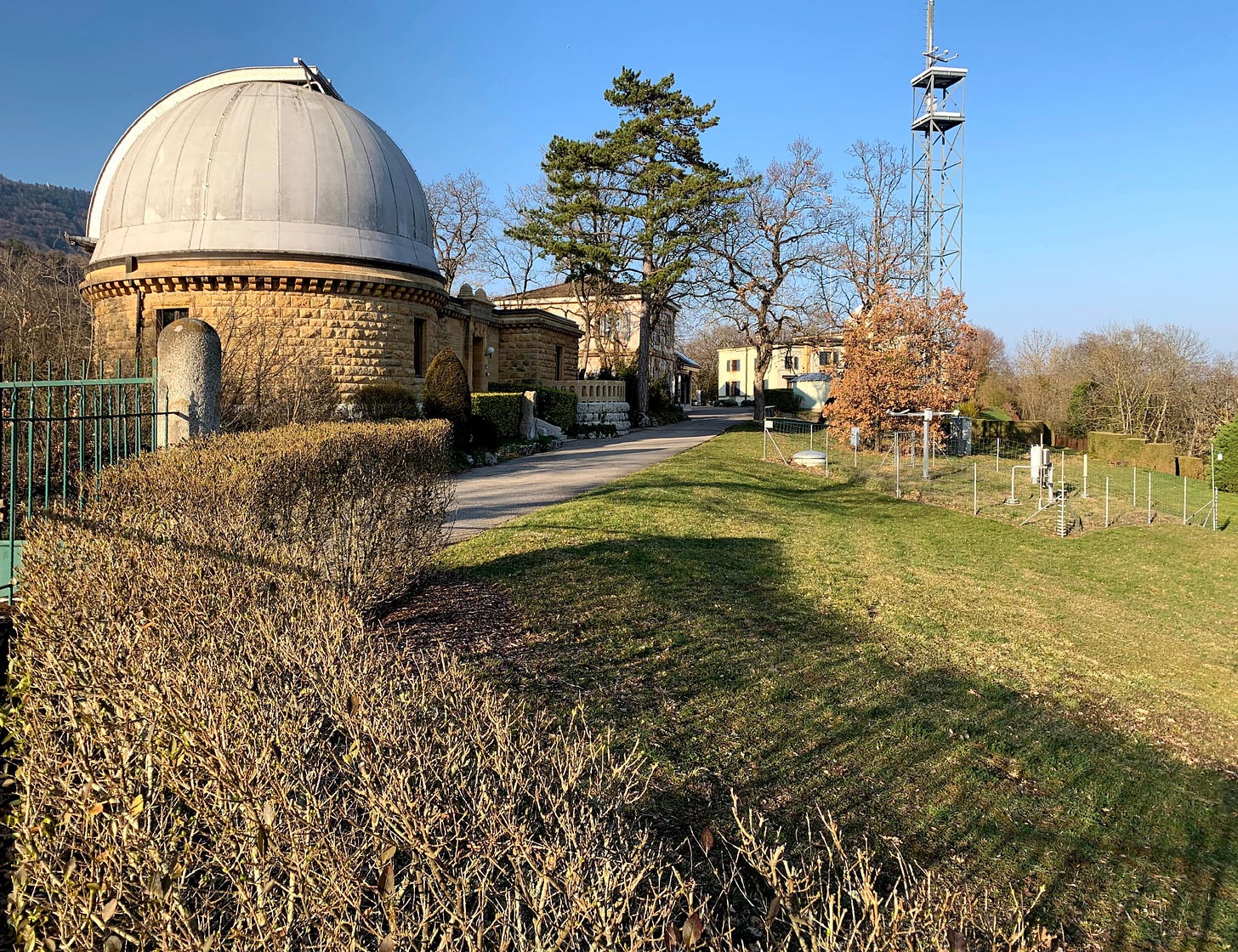
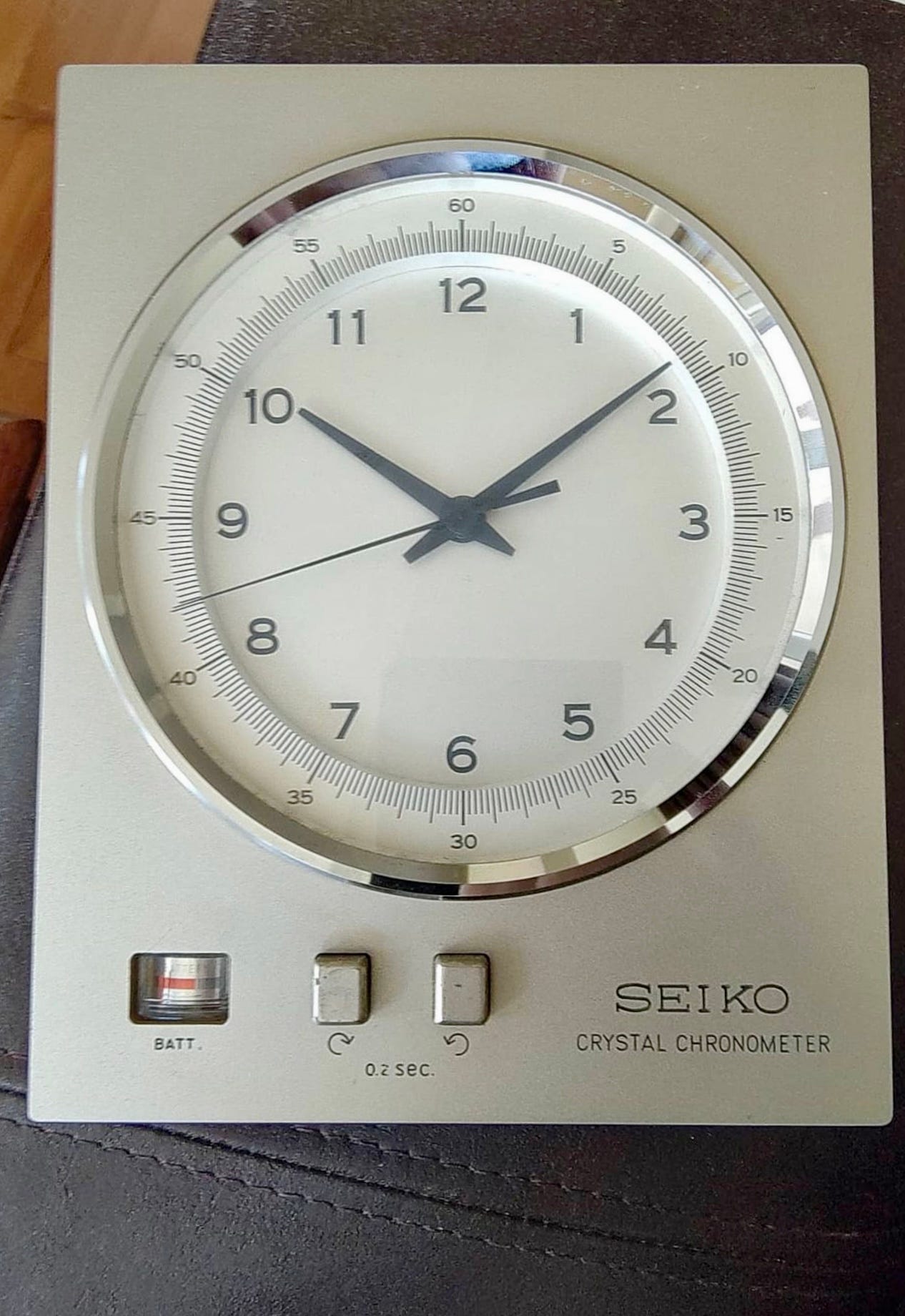
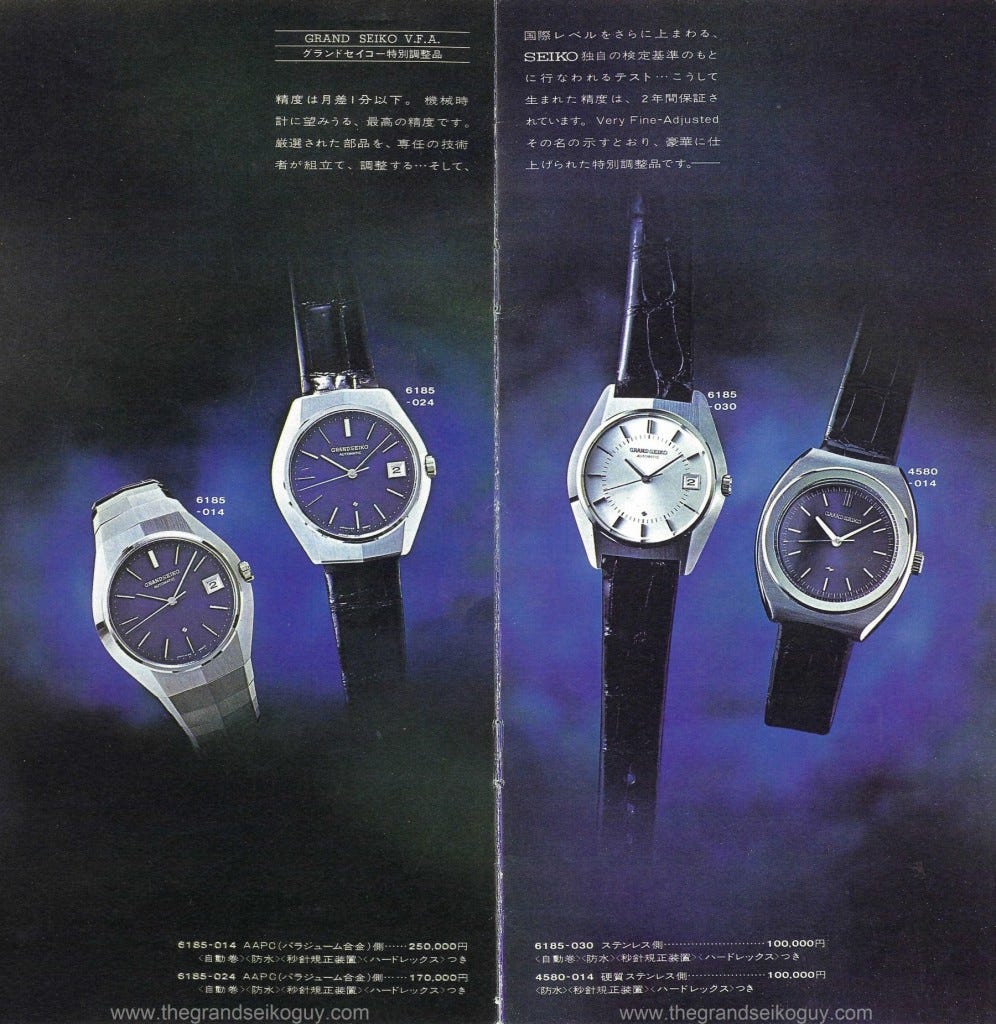
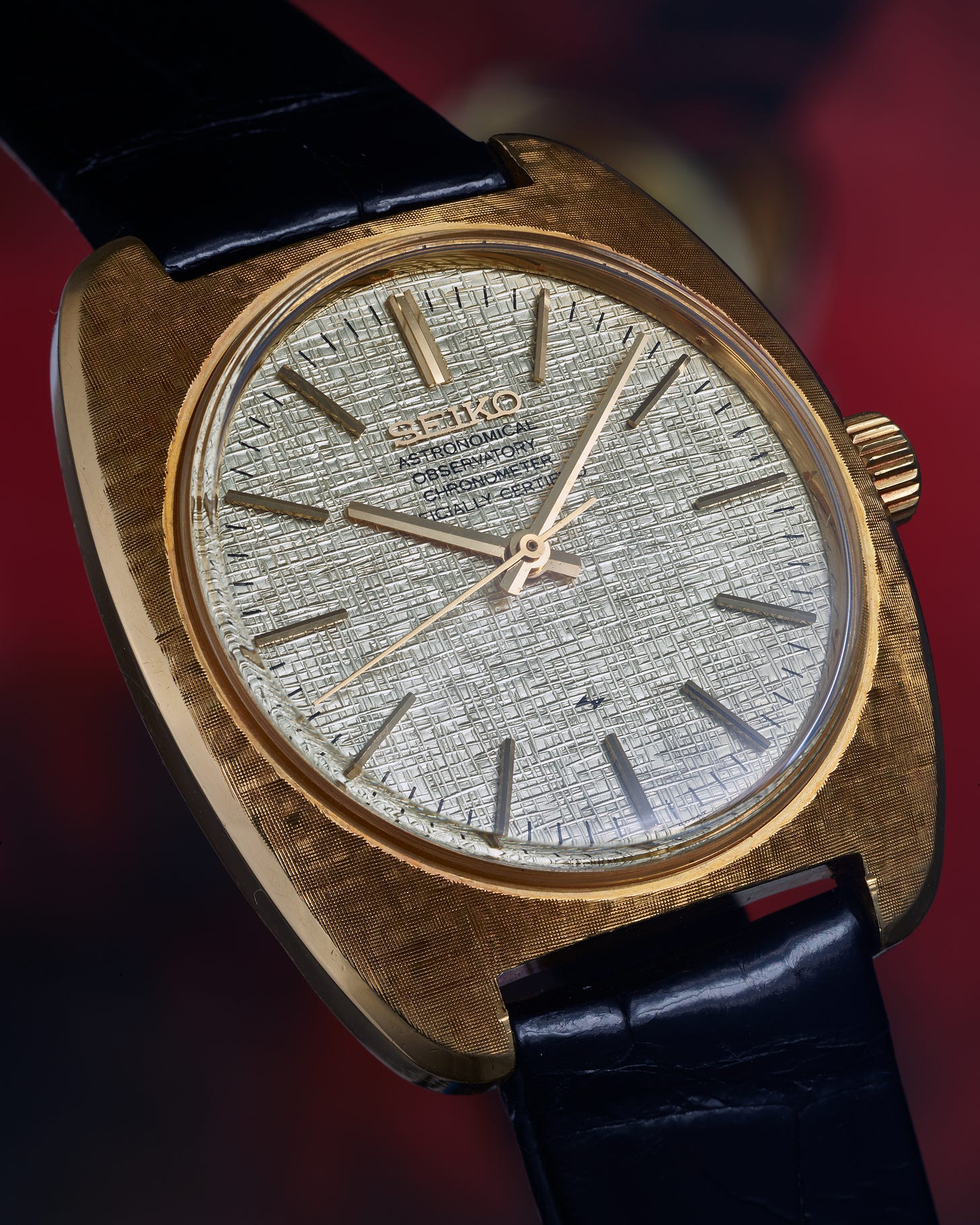
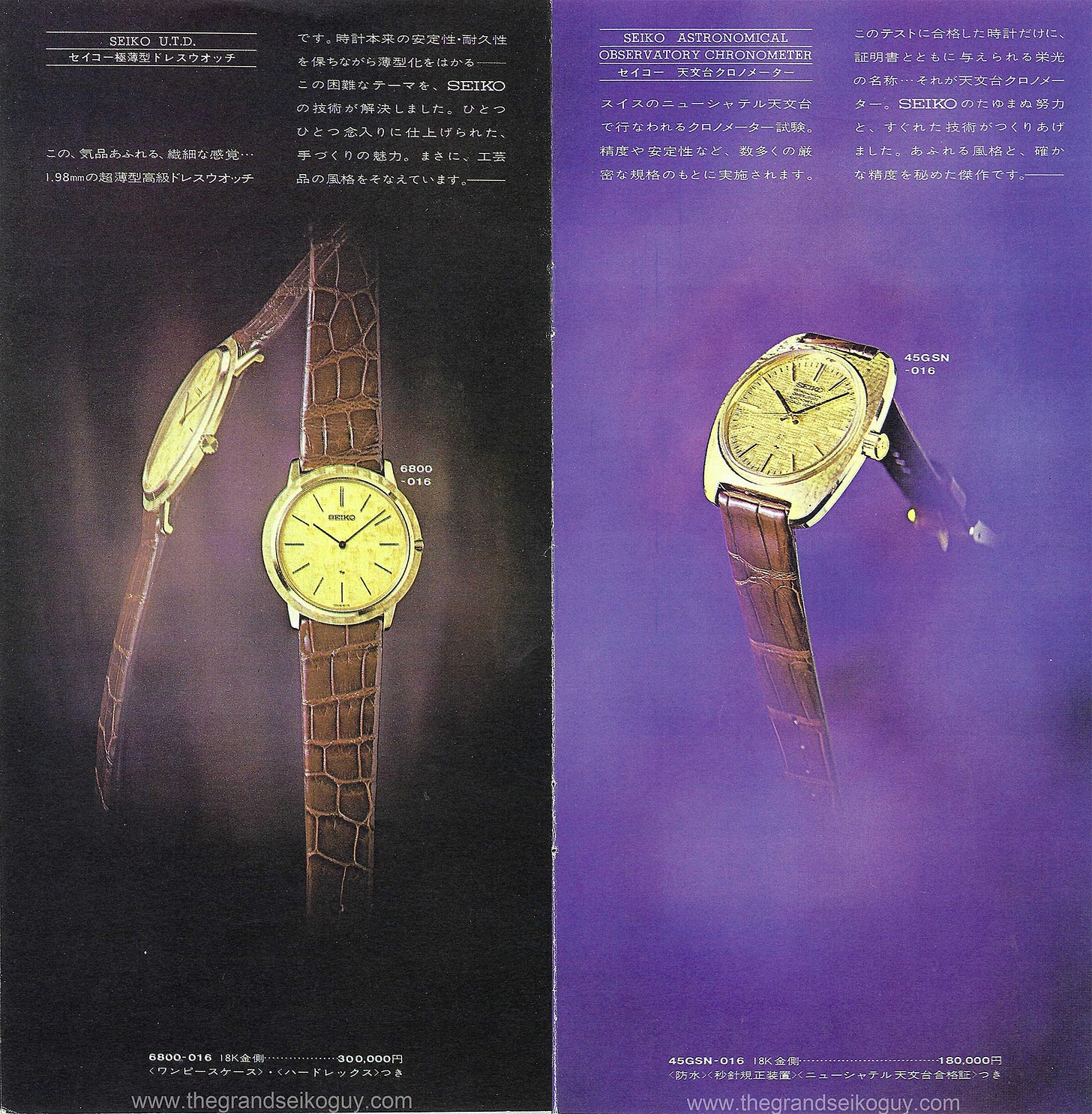
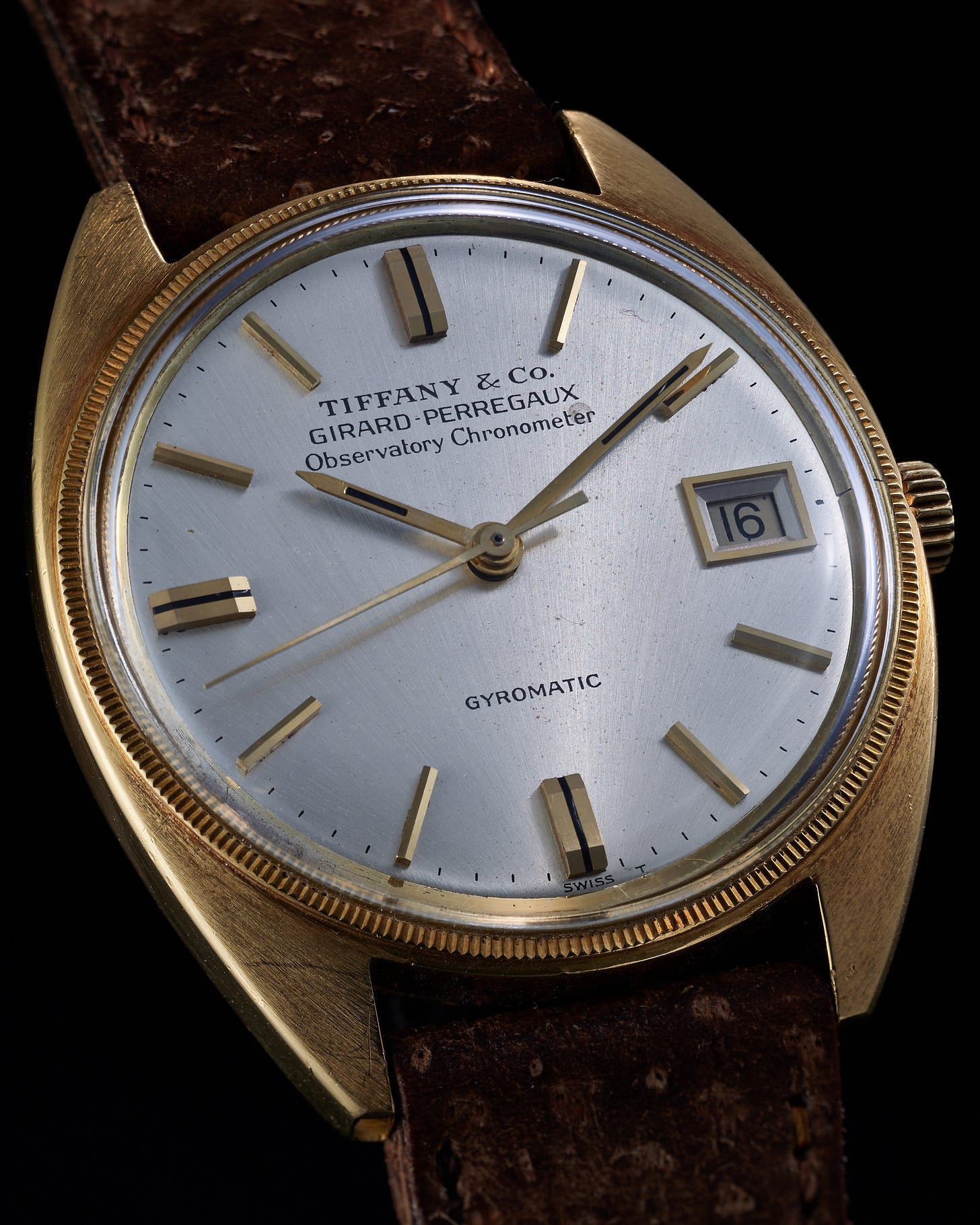
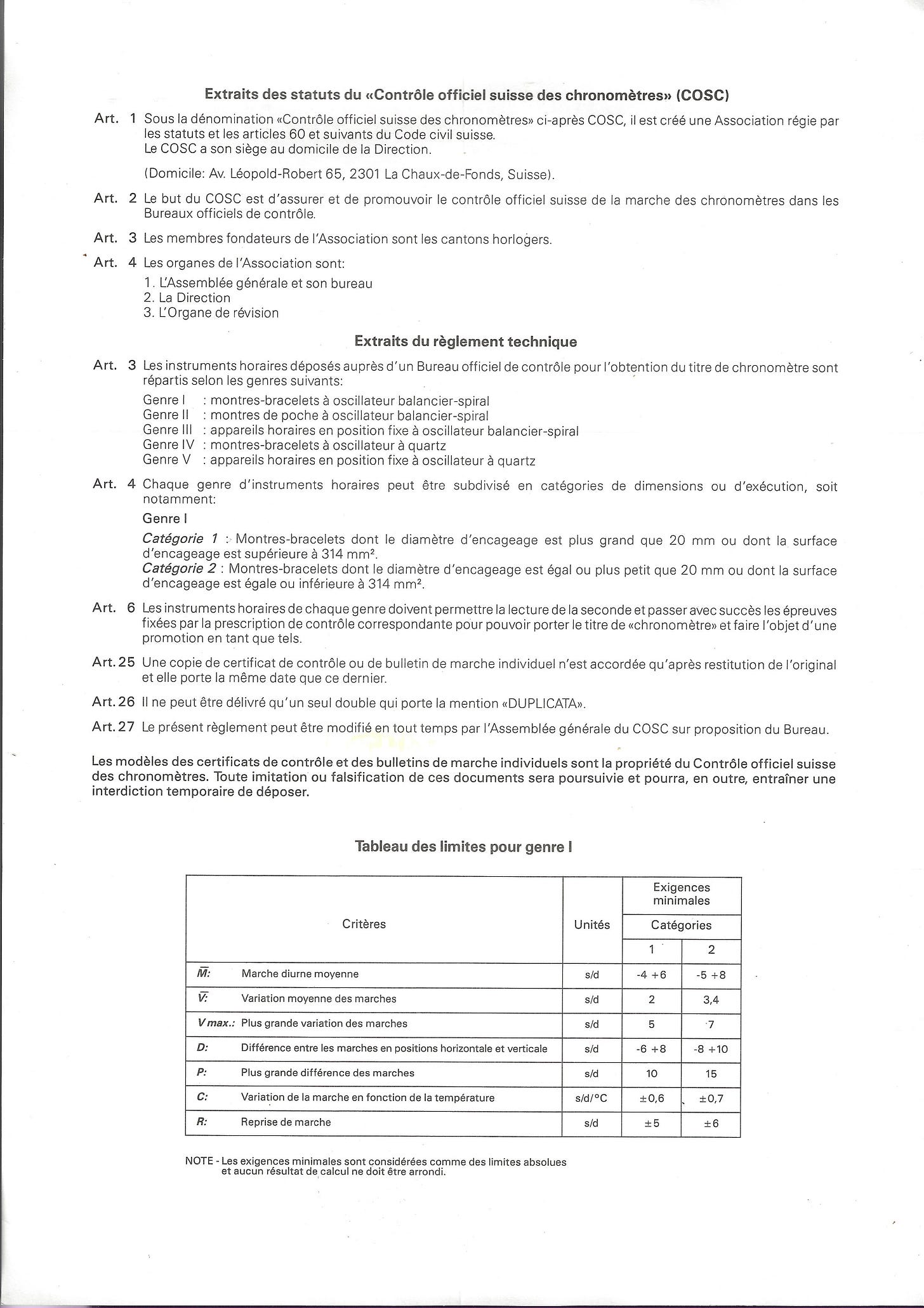
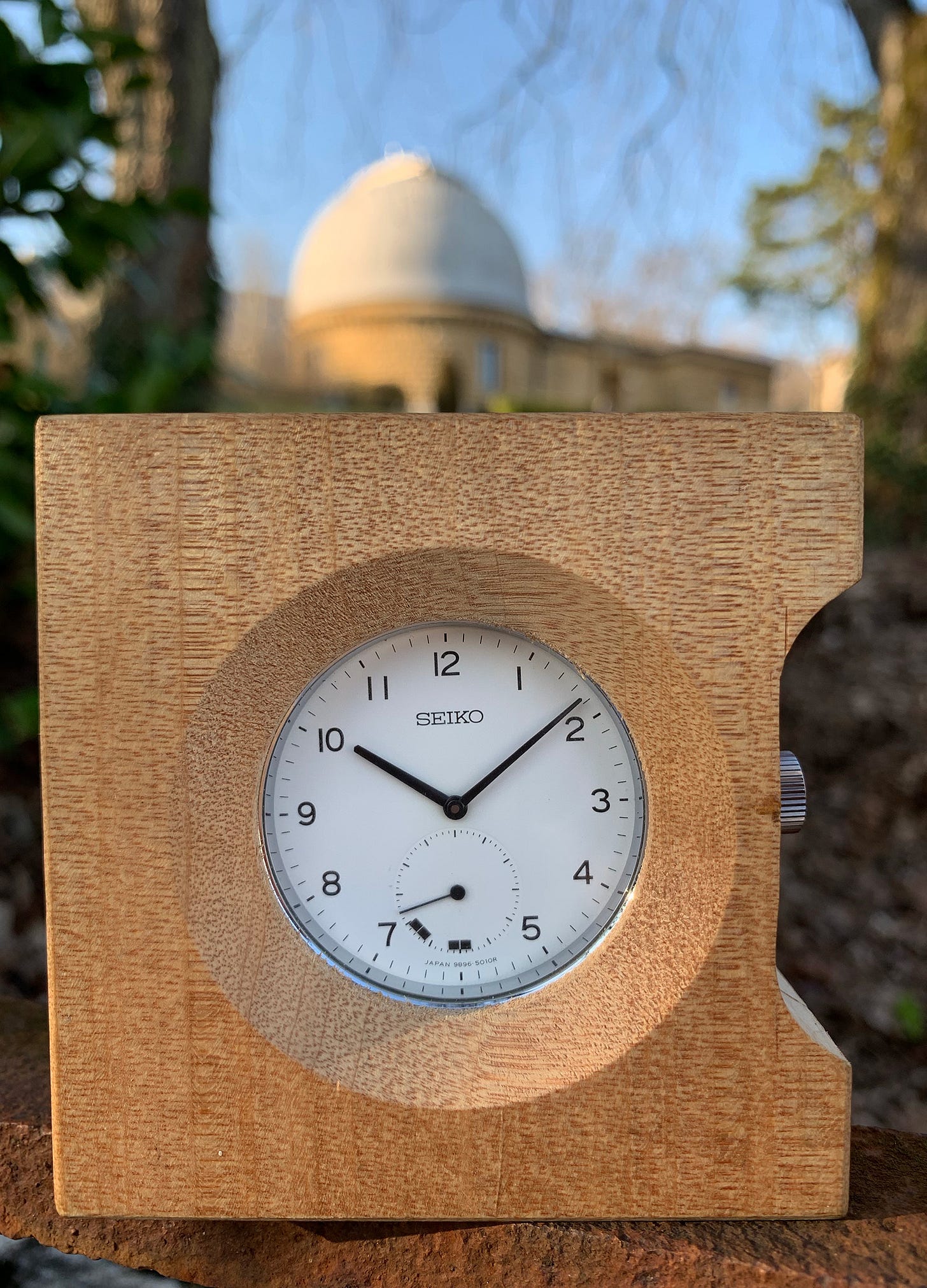
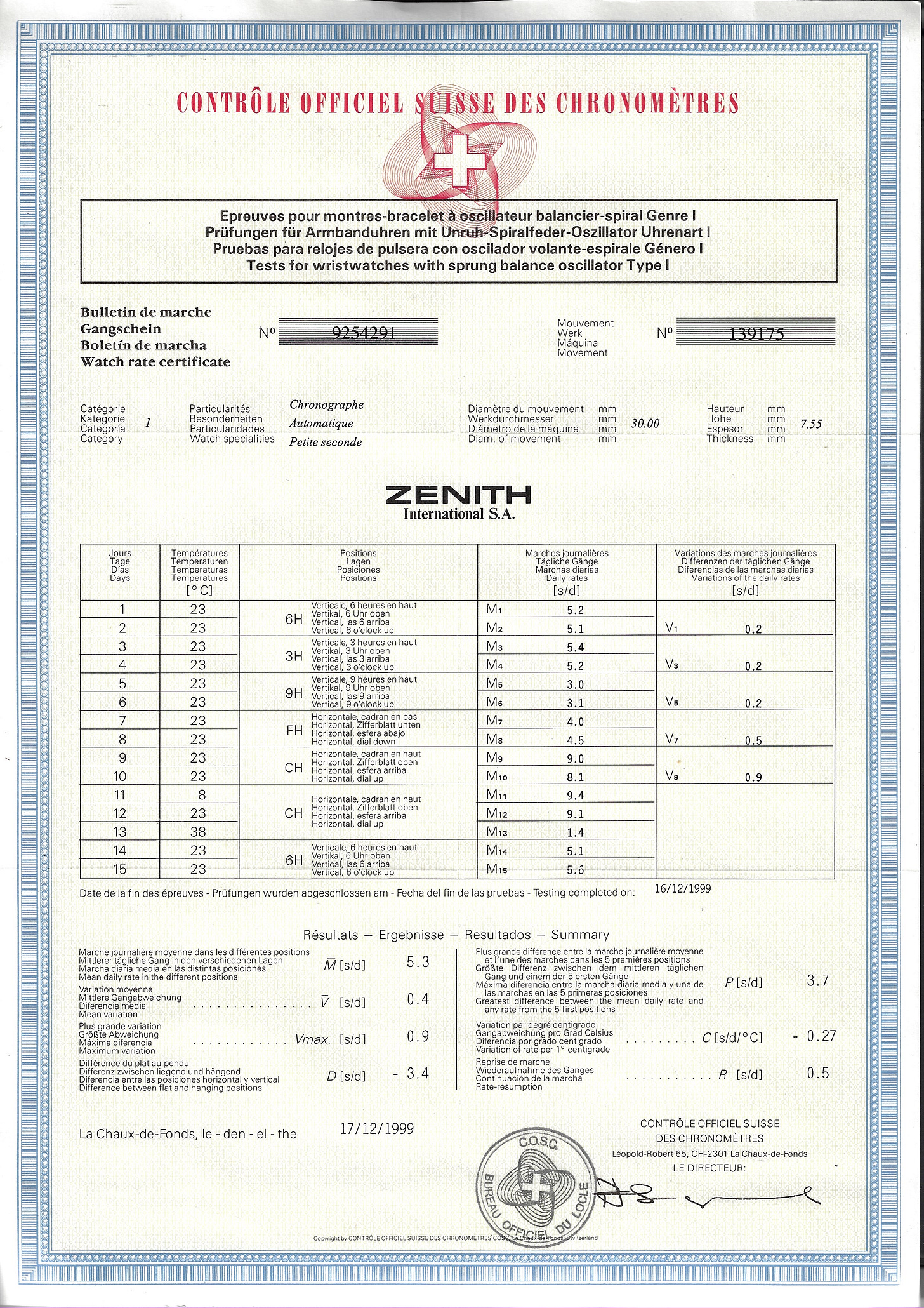







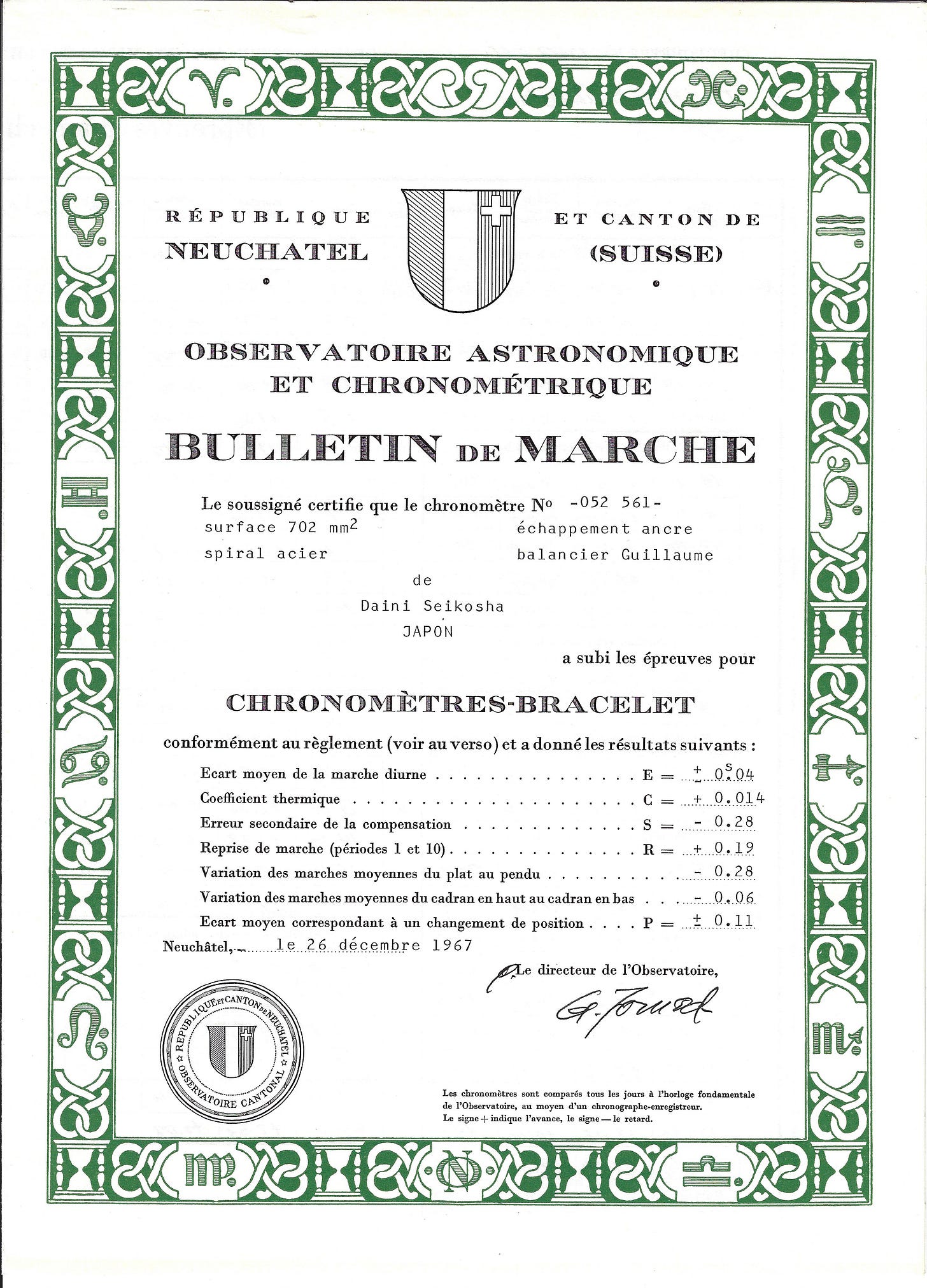







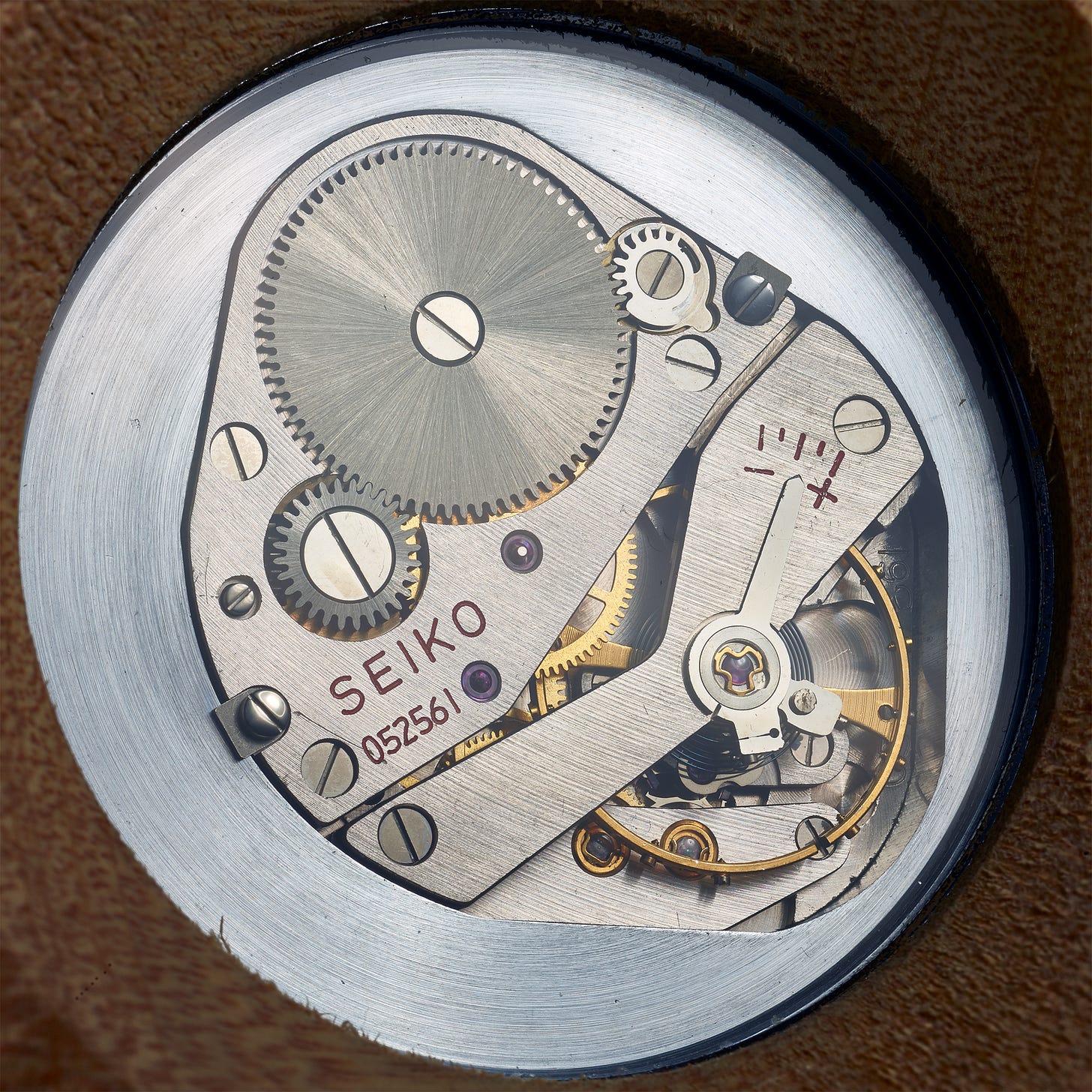





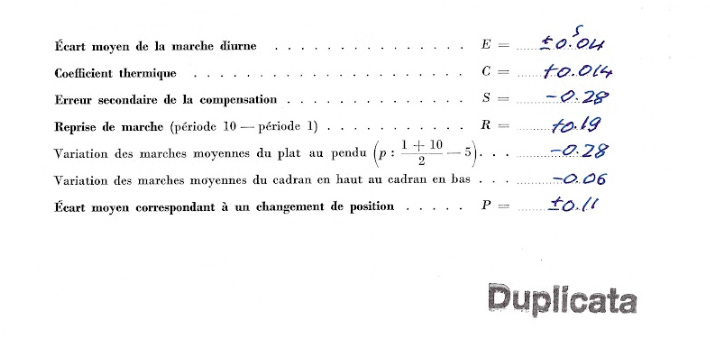

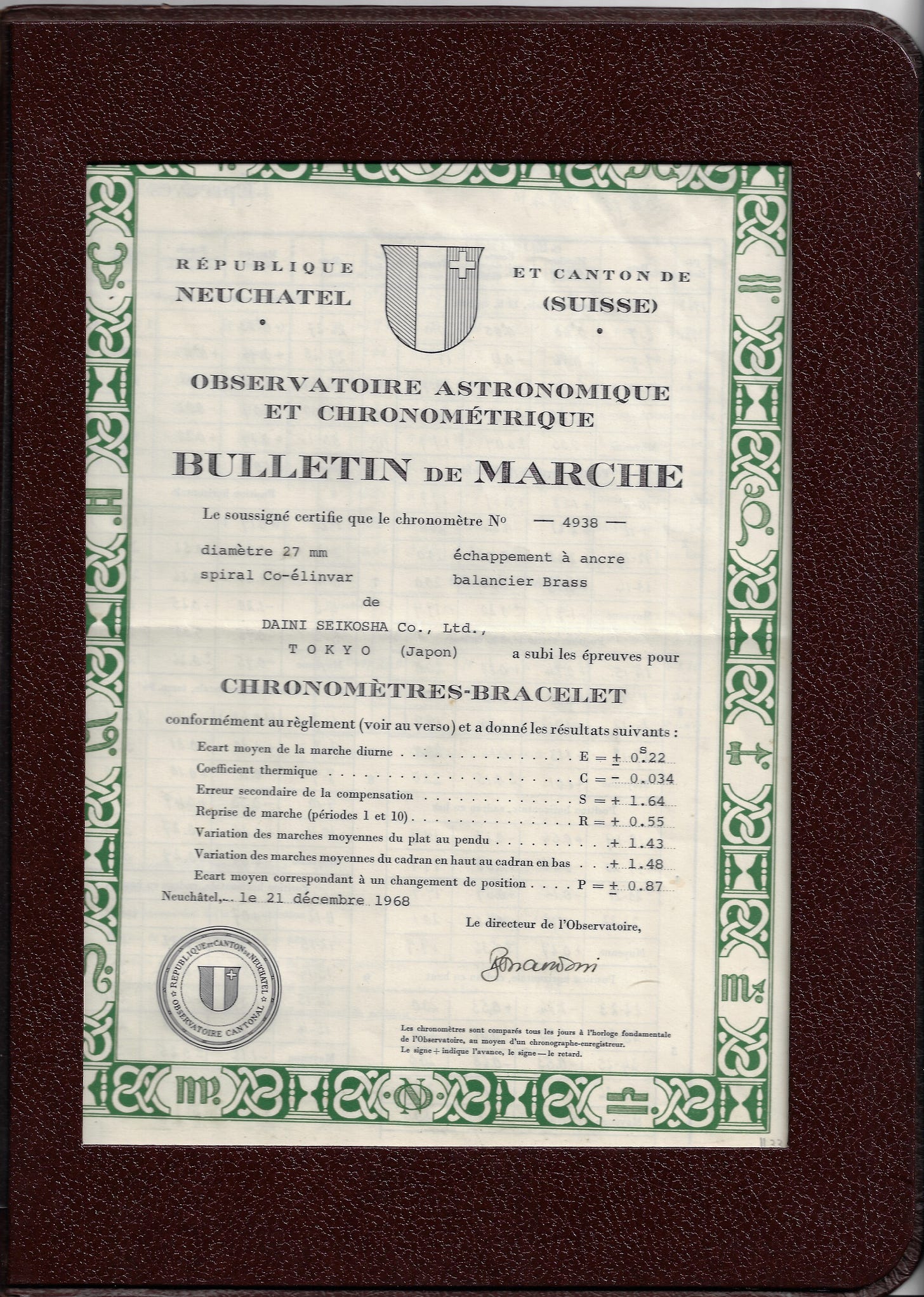


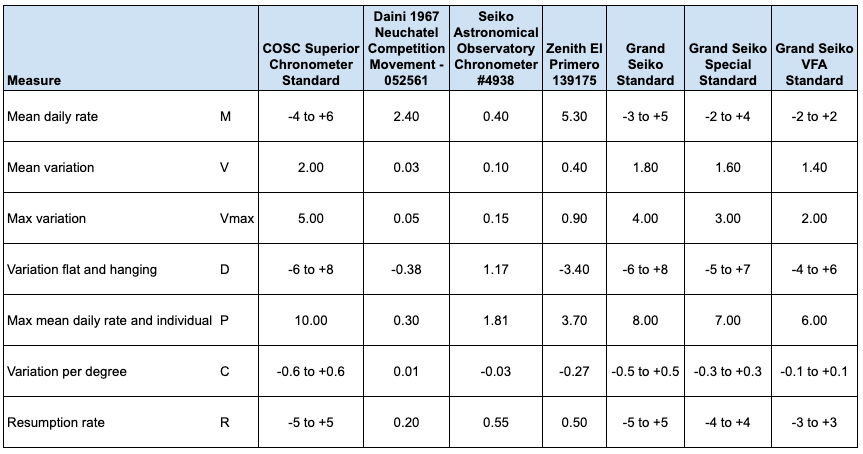








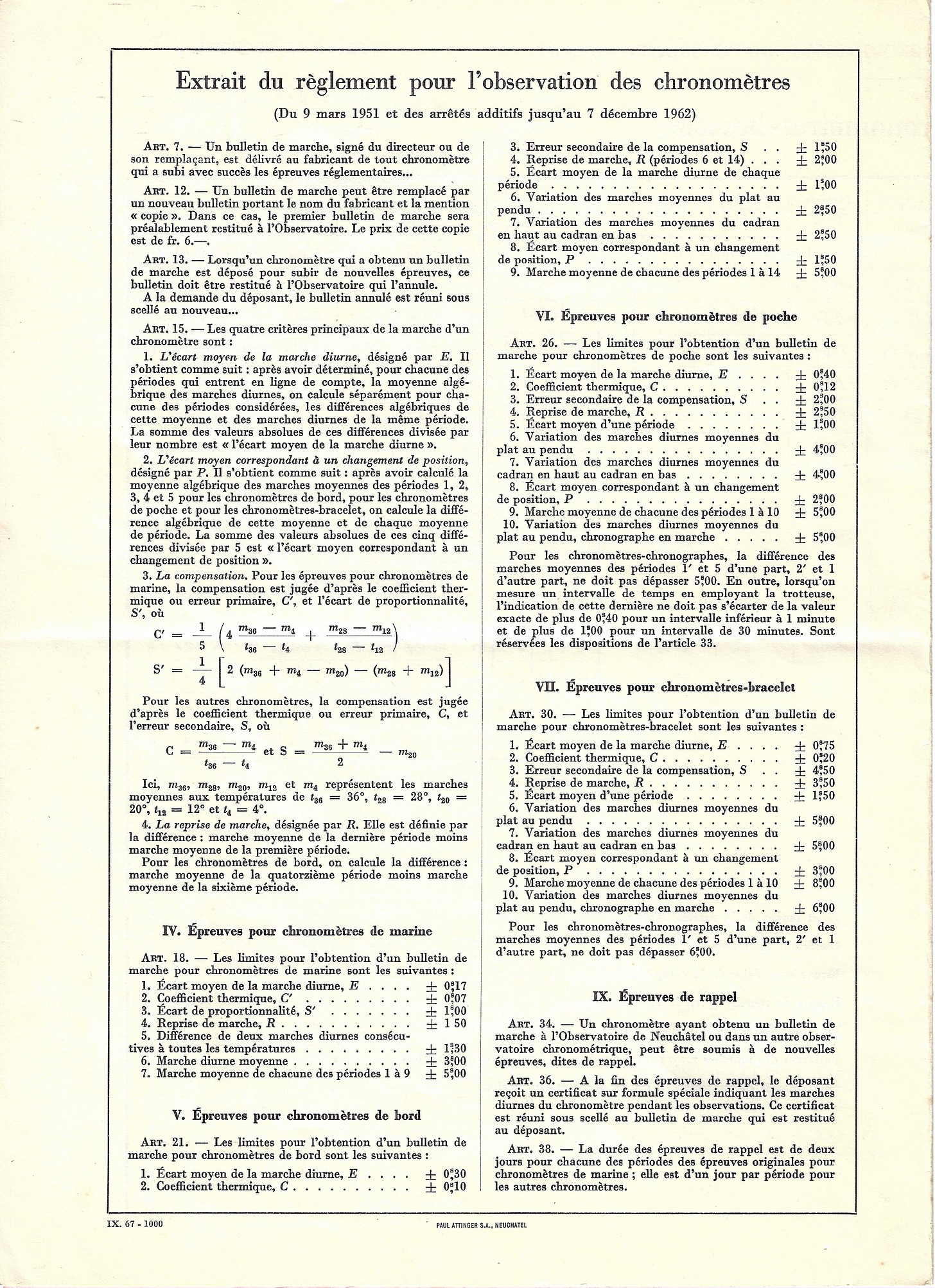


Do you actually need a proper translation of the bulletin de marche? I find the French there pretty straightforward. Marche here is intended as literally ’walk’ or how the watch ‘runs’. No pun intended, the French take a pedestrian view of watchmaking when the English speaking world is tempted to view it as a sport?
Congratulations on an amazing article on a genuinely legendary watch.